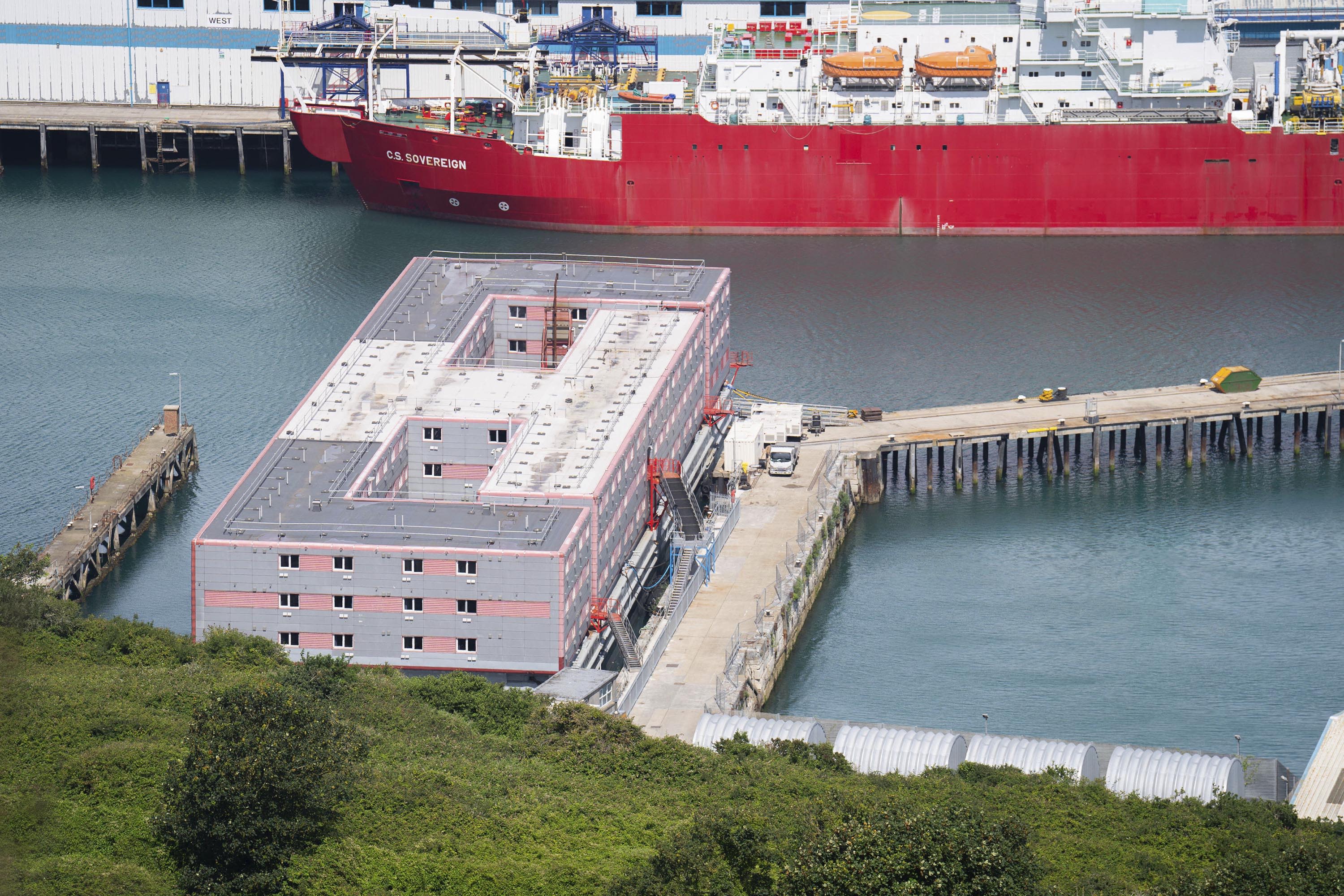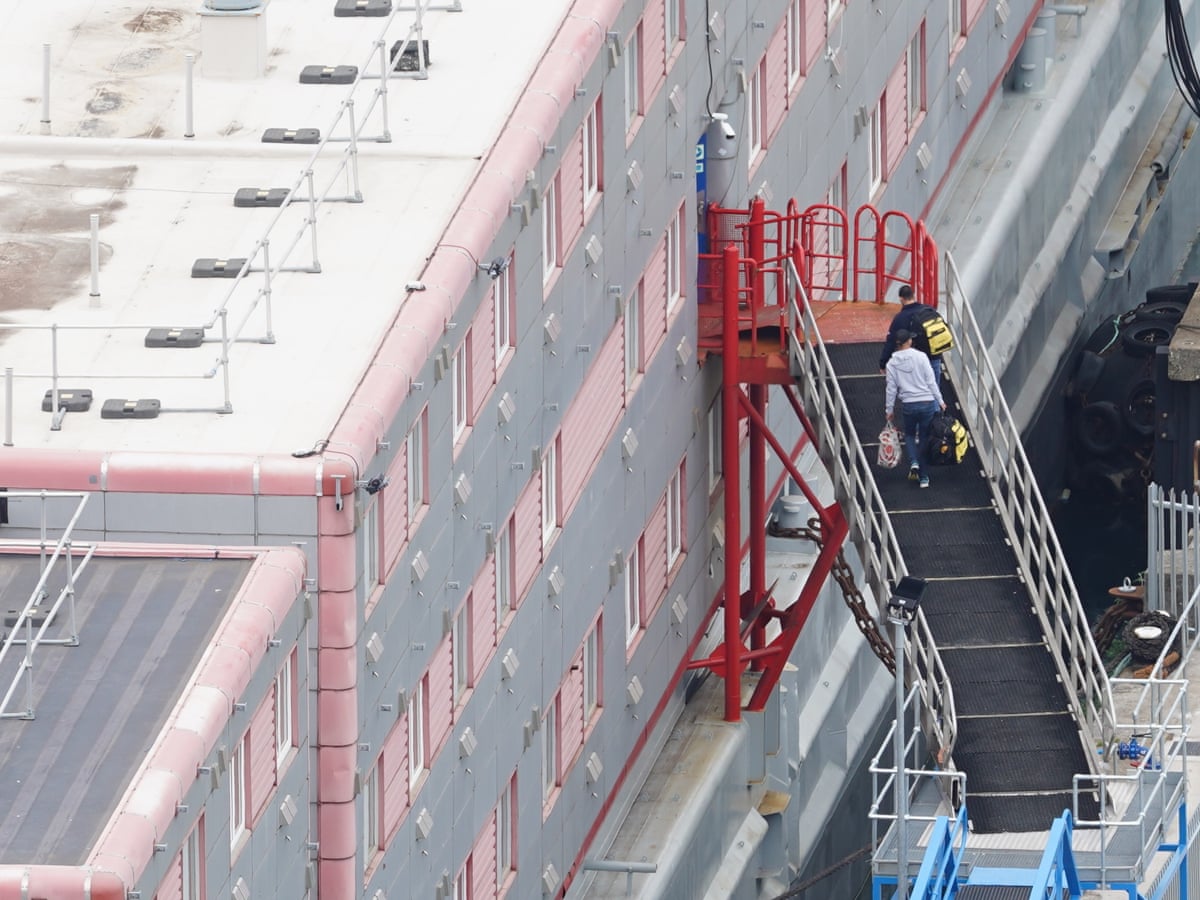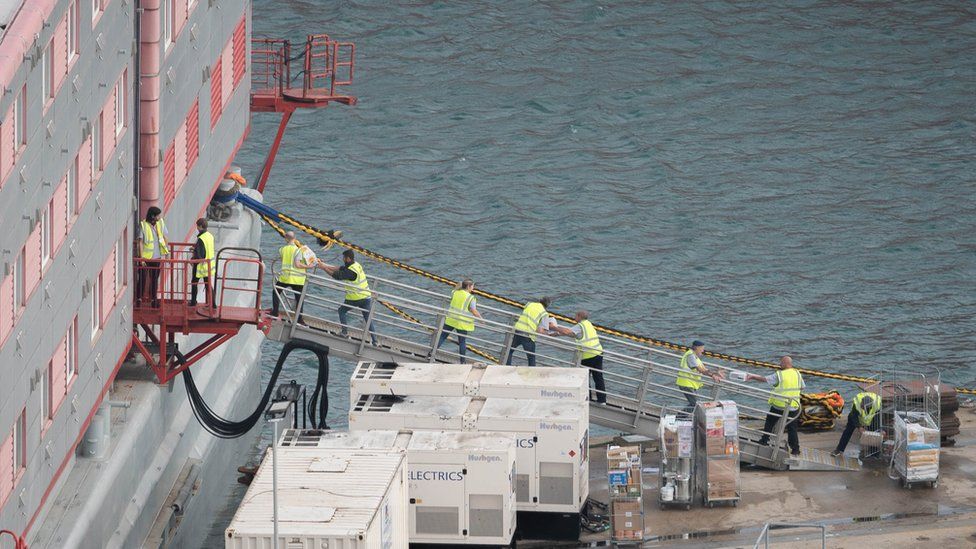UK Confronts Asylum-Seekers’ dangerous Journey Aboard Controversial ‘Deathtrap’ Housing Barge

UK Confronts Asylum-Seekers’ dangerous Journey Aboard Controversial ‘Deathtrap’ Housing Barge
In a concerning development, asylum-seekers have been compelled to seek refuge on a housing barge that has stirred controversy due to its precarious conditions. This situation highlights the ongoing challenges faced by migrants and refugees attempting to reach safety in the United Kingdom. The vessel, known colloquially as a ‘deathtrap,’ has ignited debates regarding the ethical treatment of those seeking shelter and protection.
The housing barge, which has come to symbolize the treacherous journey asylum-seekers often undertake, raises pertinent questions about the UK’s policies on immigration and asylum. Critics argue that these conditions perpetuate a cycle of vulnerability and risk, leaving many to grapple with dire living conditions even after escaping from their home countries.

Amid the ongoing global refugee crisis, the perilous voyage to safety has become a harrowing reality for countless individuals. Many fleeing war, violence, persecution, or extreme poverty embark on perilous journeys in search of refuge and a better life. For those who reach the shores of the UK, the housing barge has become a controversial emblem of a broken system.
The term ‘deathtrap’ encapsulates the dangerous and unsanitary living conditions that have been reported on these vessels. Insufficient access to clean water, proper sanitation facilities, and adequate medical care pose serious threats to the well-being of those residing on the barge.
Advocacy groups and human rights organizations have voiced their concerns about the housing barge, emphasizing the need for more humane treatment of asylum-seekers. They argue that the UK has a moral obligation to provide suitable living conditions for those under its care, regardless of their immigration status. The current situation, they contend, contradicts the principles of dignity and respect that should be extended to all individuals.
In response to the criticisms, government officials assert that they are working within the constraints of a complex immigration system, aiming to balance border control with the duty to protect vulnerable individuals. They point out that the influx of migrants and refugees presents significant logistical challenges, often straining resources and infrastructure.

However, opponents of the housing barge approach emphasize that the UK’s commitment to upholding human rights should not be compromised by logistical challenges. The government, they argue, must find innovative solutions to ensure that asylum-seekers are treated with the compassion and decency they deserve. By investing in more sustainable housing options and streamlining asylum procedures, the UK could demonstrate its commitment to both security and humanity.
Public opinion on the matter is divided. Some citizens express sympathy for the plight of asylum-seekers, advocating for a more compassionate response from the government. They believe that offering a safe haven to those in need is a testament to the UK’s values and principles. Others, however, voice concerns about the potential strain on resources and the broader implications of relaxing immigration policies.
As the debate rages on, the housing barge issue serves as a microcosm of the global struggle to address the refugee crisis. The challenges faced by the UK are mirrored in various forms across the world, as countries grapple with the ethical and logistical complexities of immigration and asylum.
Ultimately, the fate of the housing barge and those seeking shelter aboard it will have implications far beyond its immediate context. It will serve as a litmus test for the UK’s commitment to its international obligations, human rights standards, and its role in offering sanctuary to the vulnerable. The power to transform the narrative lies with policymakers, who must decide whether to perpetuate a system that is seen as inhumane or to forge a new path that values both security and compassion.

Amid the ebb and flow of political debates and bureaucratic intricacies, the term “perilous” takes center stage in the narrative of asylum-seekers attempting to find solace on the shores of the United Kingdom. This single word encapsulates the life-threatening challenges, both physical and emotional, that these individuals endure as they navigate treacherous waters in pursuit of safety and hope.
In conclusion, the housing barge, now infamously dubbed a ‘deathtrap,’ has cast a spotlight on the plight of asylum-seekers and the challenges inherent in the immigration system of the United Kingdom. The ethical dilemmas, logistical constraints, and broader policy implications surrounding this issue highlight the need for a comprehensive and compassionate approach. The ongoing debate underscores the pivotal choice faced by the UK government – a choice that will define the nation’s stance on human rights, compassion, and its place on the global stage.




